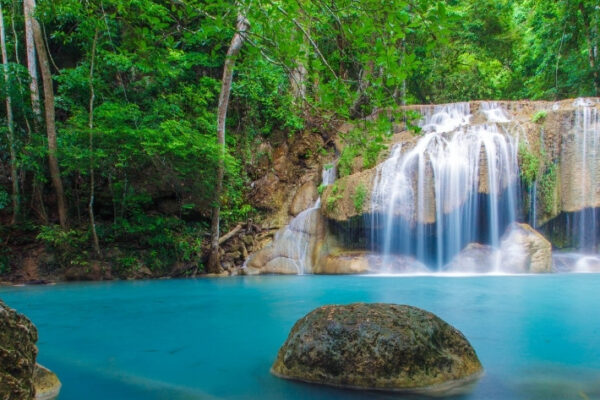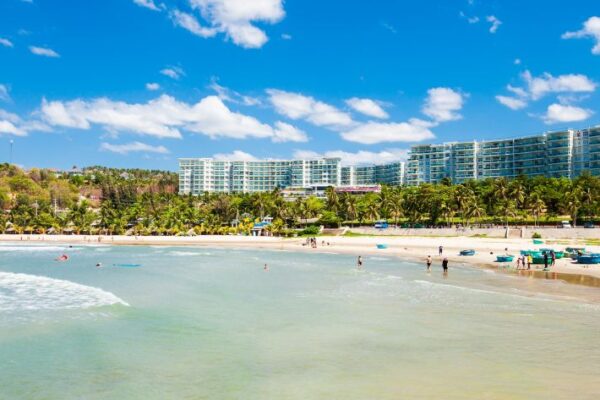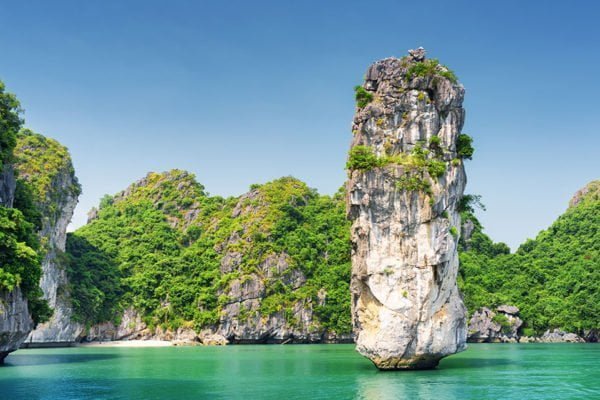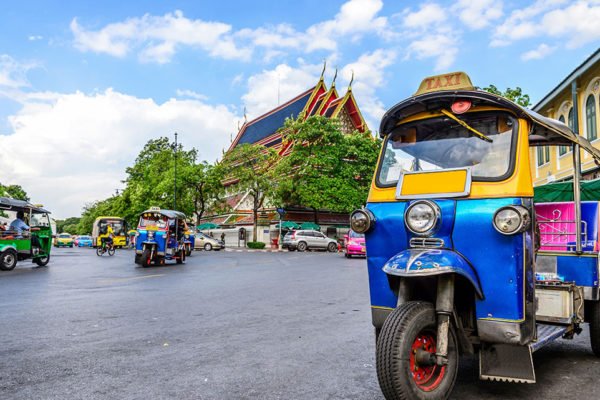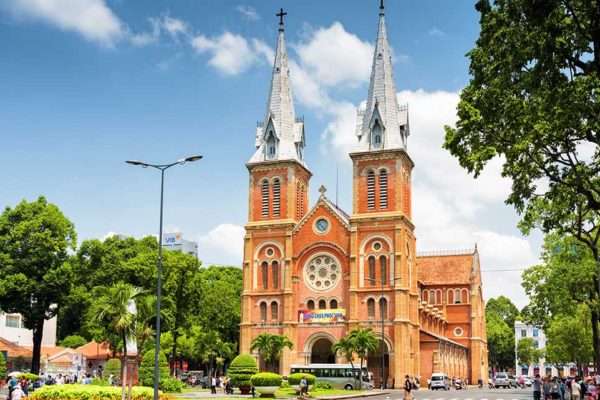Top 7 Stargazing Places in Southeast Asia for Unforgettable Night Skies
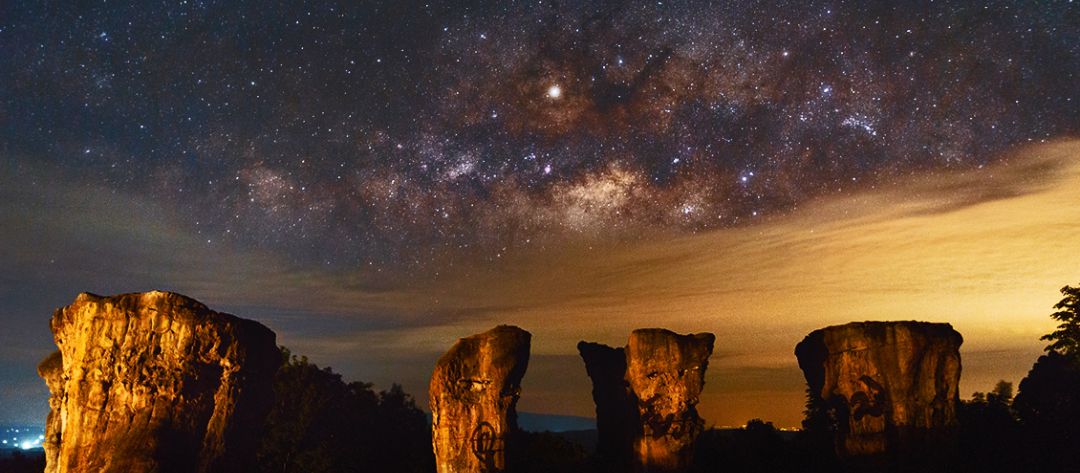
It’s natural to think of Southeast Asia for its landscapes, cuisine, and cultures, yet the region also hides skies that glow with countless stars. From remote islands to highland plateaus, these stargazing places offer nights free from city glare. Here, let’s uncover seven truly dazzling destinations.
Phnom Kulen, Cambodia
Location & Access
Phnom Kulen (Kulen Mountain) lies about 48–50 km north of Siem Reap in Siem Reap Province. It takes roughly 1.5 to 2 hours by car or van along Route 67, with paved roads for most of the way and a winding, partly dirt stretch up the mountain.
Visitors must purchase an entry ticket (approximately 20 USD for non-Khmer nationals) at the gate or in advance.
Highlights
Phnom Kulen is characterized by thick evergreen and dipterocarp forests, dramatic sandstone plateaus, and a rich palette of historic ruins and sacred sites. The “River of a Thousand Lingas” (Kbal Spean) reveals a submerged riverbed of carved lingas and yonis in the dry season. During wetter months, part of it is hidden by water and jungle green.
Atop the mountain is Preah Ang Thom, where an 8-meter reclining Buddha is carved into sandstone rock, offering sweeping views over the forest canopy and rural land beyond.
Two waterfalls (one modest, one more dramatic depending on season) frame calming pools, and the lost city of Mahendraparvata, with ruined temples and ancient hydraulic systems, lies mostly hidden beneath vegetation.
Stargazing Conditions
Because Phnom Kulen is elevated (~400-487 m), removed from major urban centres, night skies here are relatively dark, especially when the moon is new and skies are clear.
The dry season (November through April) tends to bring lower humidity, fewer clouds, and much better visibility. During the wet season (May-October), heavy rainfall, frequent cloud cover, and mist/haze often reduce clarity.
Nights just after dusk and before midnight are excellent for seeing constellations, bright stars, and when conditions align, the Milky Way. Light pollution is minimal, though some glow from Siem Reap may be faintly visible depending on your exact vantage point.
Experience & Activities
- Camping on the plateau: Spending the night in basic campsites or safe open areas atop the mountain so that the sky’s darkness can be fully experienced. The sounds of jungle, fresh air, and cool night breezes heighten the sense of being under a vault of stars.
- Photography of Milky Way & silhouettes: Using the reclining Buddha at Preah Ang Thom or temple ruins as foregrounds for long-exposure photography. The contrast between sacred stone architecture and star-strewn sky can be powerful.
- Guided night walks or quiet sit-downs: After sunset, walking away from any path lights into darker forested patches. Sitting in silence, perhaps near one of the waterfalls or in an open glade, to let eyes adjust and watch constellations emerge.
- Astronomical events & local festivals: If timing allows, witnessing meteor showers or celestial events can be particularly moving from this elevation. Also, full moon nights may coincide with pilgrimage activity, adding cultural atmosphere.
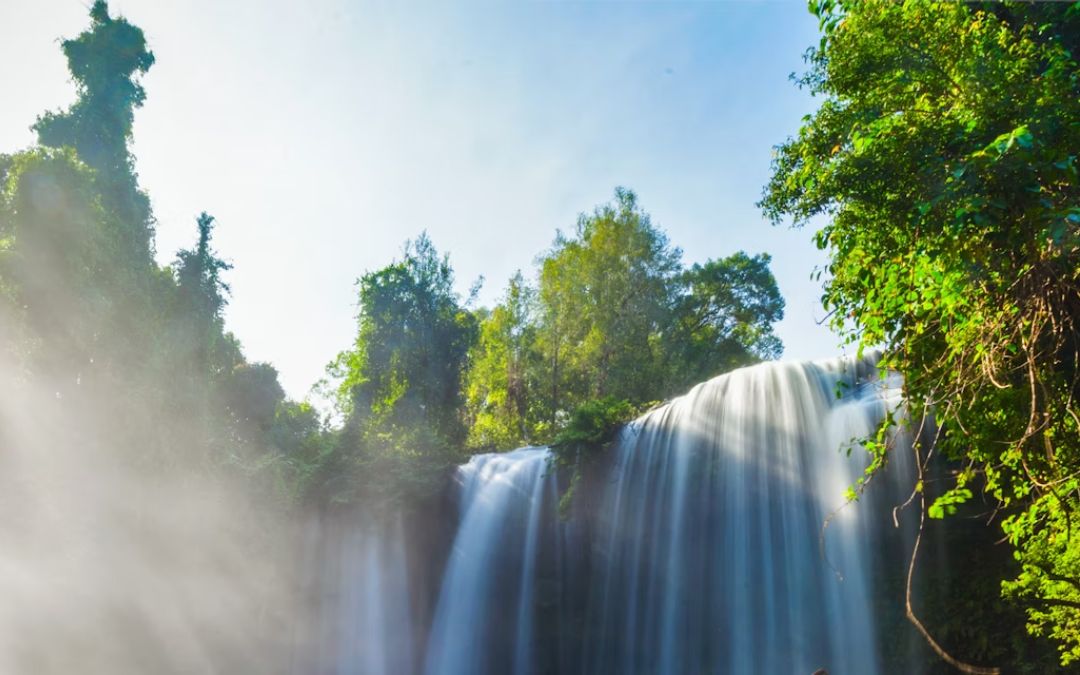
Phnom Kulen’s pristine waterfalls and elevated forests create some of Cambodia’s most secluded stargazing places.
>> Read More: How to Plan Multi-Country Tours to Thailand, Cambodia, and Vietnam without the Stress
Doi Chiang Dao, Thailand
Location & Access
Doi Chiang Dao, a lofty 2,175 m limestone massif, rises within Chiang Dao District of Chiang Mai Province, in northern Thailand. It lies about 70 km north of Chiang Mai town, reachable by winding mountain roads through forested valleys.
For those heading up toward the summit or viewpoints, some trails are only open during the dry season. Permissions may be required since much of the area is under protected status as part of the Chiang Dao Wildlife Sanctuary.
Highlights
This region boasts deep evergreen and hill evergreen forest belts, patches of coniferous woods at higher altitudes, and limestone cliffs that create dramatic silhouettes against the sunrise and twilight.
Wander into caves like Wat Tham Chiang Dao, whose chambers—Reclining Buddha, Water Chamber, Crystal Chamber among them—offer both geological wonder and cultural calm. Rich biodiversity adds to its appeal, since rare birds, endemic species, and flora unseen elsewhere in Thailand find refuge here.
Stargazing Conditions
Clear skies are most dependable between late October and mid-April, when the monsoon retreats, humidity falls, and cloud cover drops. February often ranks among the clearest months, with a high percentage of skies partly clear or better. Conversely, from around May through October, clouds, haze, and frequent heavy showers can obscure the view.
At higher elevations near the summit, light pollution is negligible—only faint glow from distant towns may appear. Nights tend to grow quite cold, especially under moonless skies, improving visibility of the Milky Way, constellations, and faint celestial nebulae.
Experience & Activities
- Camping under the stars: Setting up camp in designated stargazing places or on clearings near the summit means being far away from any glow of towns. As night falls, the limestone cliffs fade into shadow, and with no artificial lights around, the Milky Way stretches vividly overhead. Staying overnight also allows stargazers to catch the shifting sky from dusk until dawn.
- Summit hikes at twilight: Many travelers aim to reach stargazing places before sunset, then linger until the stars emerge. Watching the sky change—first painted in fiery oranges, then slipping into deep blues, and finally bursting into starlight—makes the steep, rocky climb worth the effort. A headlamp and sturdy boots are essential, since the trails can be rugged in the dark.
- Astrophotography in dramatic settings: The jagged ridgelines, lone trees, and towering limestone cliffs provide striking frames for the night sky. Photographers often capture long exposures of star trails circling above the peak, or time their visit during the Milky Way season (roughly March–October) to place the galaxy’s bright core above the mountain silhouette.
- Sacred caves after dark: Wat Tham Chiang Dao’s cavernous chambers hold both natural formations and Buddhist shrines. When visited in the quiet of evening (if permission and safety allow), the contrast between the enclosed stillness of the cave and the open expanse of stars outside creates a rare, meditative stargazing experience.
- New moon skywatching: Planning a trip around the new moon ensures the darkest skies. On these nights, faint constellations, meteor streaks, and the soft glow of the galactic plane are at their most visible. Combined with the crisp mountain air at elevation, this is when Chiang Dao offers its clearest celestial views.
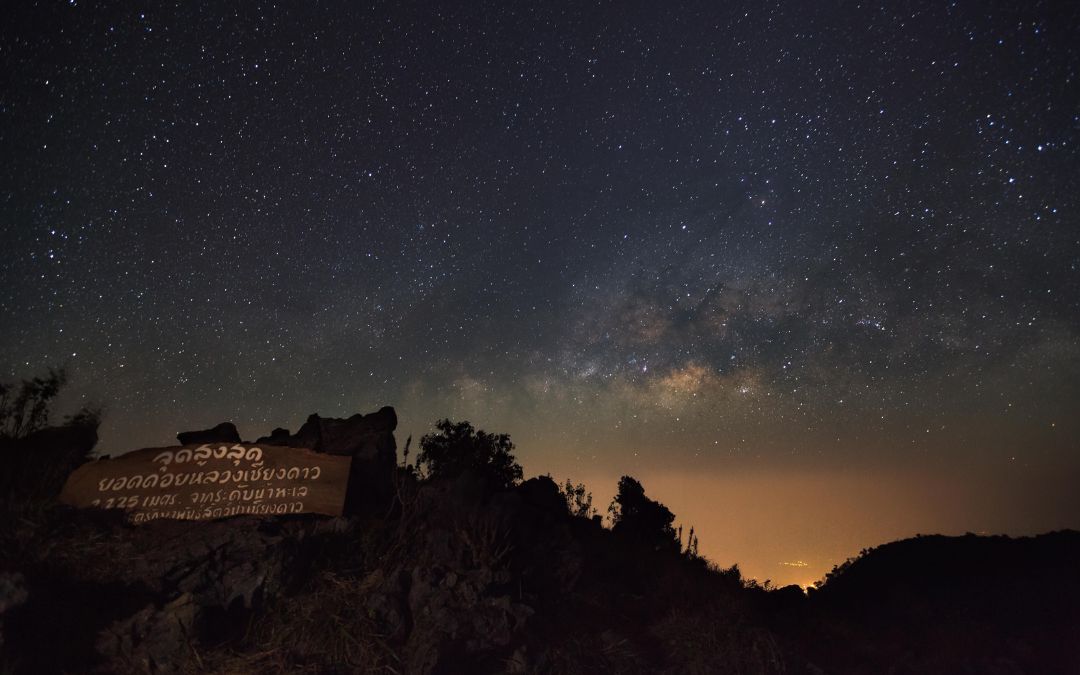
Thailand’s mountainous terrain at Doi Chiang Dao ranks among Southeast Asia’s most spectacular stargazing places.
El Nido (Nacpan Beach), Philippines
Location & Access
Nacpan Beach lies about 22 km (roughly 45 minutes by road) north of El Nido town proper, on the main island of Palawan. Access is by van shuttle, tricycle, or renting a motorcycle. Some parts of the road are paved, others less so—unpaved sections get rougher in the rainy season. There’s also Nacpan Beach Glamping, just behind Sunmai Bar, which offers accommodations very close to the sand.
Highlights
Nacpan Beach stretches for about 4 km of soft, creamy-white sand fringed by coconut palms, where the shoreline blends into turquoise, almost glass-like water in calm weather. Together with Catilang Beach in the south, they form the “Twin Beaches”, meeting at a narrow strip of land with a hill viewpoint that frames both stretches of coast.
Beyond the shore, jungle hills rise up behind the beach, and Labutaya Island sits offshore, offering additional seascapes and marine vistas. The feeling is unhurried: fewer crowds (especially away from peak season), rustic local eateries, open skies, which means that nature still dominates here.
Stargazing Conditions
Dry season months—December through February into early March—are the best for celestial views. During this time rain is minimal, skies are clearer, humidity is lower, and the landscape remains lush.
Outside of those months, especially June through November, showers and cloud cover often reduce visibility. Nights are darkest after the moonset (or near new moon phases), and because the area is relatively far from large urban light centers, light pollution is limited.
A short walk from beach bars or glamping sites (just off the beach) removes most artificial light, letting stars appear bright overhead. The horizon over the sea is wide and usually unobstructed, which helps in seeing celestial arcs or constellations as they rise.
Experience & Activities
- Quiet beach retreats: Moving further north along Nacpan, away from the livelier huts and bars, gives access to long silent stretches of sand. Here, a mat or blanket is all that’s needed. Once the last glow of twilight fades, the horizon opens and the stars fill the dark sky without interruption.
- Glamping by the shore: Staying at beachfront glamping sites or eco-resorts lets guests step out from their tents straight onto the sand. Just a short walk from the campsite, the noise drops away, leaving only the sound of waves and the brilliance of the sky overhead.
- Twin Beaches viewpoint: Climbing the hill where Nacpan and Calitang meet offers a wide view of both coastlines. Arriving before sunset and lingering as darkness falls turns the scene into a natural observatory, where constellations rise clearly above the open sea.
- Starlight and bioluminescence: On certain nights, the sea itself mirrors the sky. By wading into shallow water after dark, glowing plankton flicker around each step, creating the surreal sense of stars both above and below.
- Moon-phase stargazing: Planning visits around the new moon gives the most striking results. When moonlight is absent, the Milky Way arcs across the sky, while constellations and even faint star clusters shine with unusual clarity. Staying late into the night ensures the sky is at its darkest.
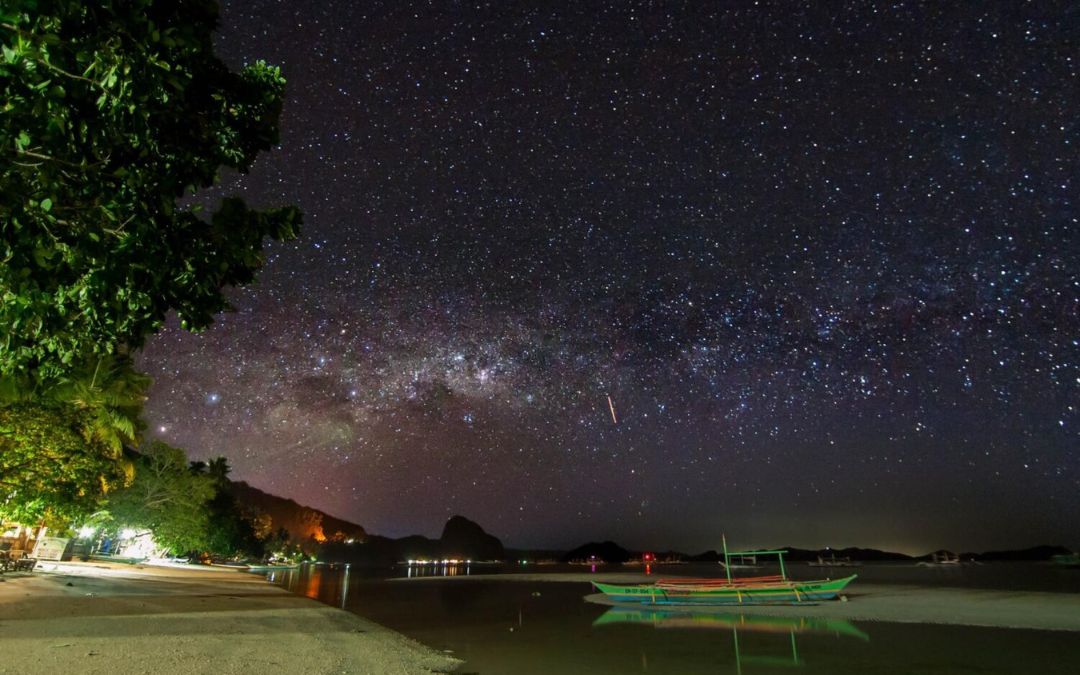
Tropical beaches like El Nido’s Nacpan offer unique coastal stargazing places where ocean horizons meet brilliant night skies.
Sapa, Vietnam
Location & Access
Sapa is a mountain town in Lao Cai Province, in northern Vietnam, set high in the Hoang Lien Son range at about 1,475 m above sea level. It’s reachable via road from the Lao Cai railway station (which connects to Hanoi by overnight train or bus), or by direct bus services. From Sapa town center, many stargazing places require hikes or travel to higher ridges and villages to escape town light pollution.
Highlights
Terraced rice fields dominate Sapa’s landscapes, especially in the Muong Hoa Valley, where centuries-old cultivation creates layers of paddy steps contouring the hills. Villages like Ta Van, Lao Chai, Cat Cat and Ta Phin offer cultural immersion through traditional wooden stilt homes, ethnic minority crafts, forested trails, small streams, and waterfalls. Above all, there is Fansipan, Vietnam’s tallest peak (~ 3,147 m), which often looks like a watchtower amid a sea of clouds and peaks around it.
Stargazing Conditions
Clear night skies in Sapa are often best during the dry seasons—especially September through November and March through May. During these months, rainfall drops significantly, humidity tends to be lower, and skies often clear after sunset. Nights are crisp, especially at higher elevations near Fansipan or remote villages, which reduces haze. Even so, mist and fog are still possible, especially in winter (December–February) when cold air can trap moisture in valleys.
For the best star visibility, avoid times when the moon is near full, and aim for after-moonset hours. That’s when constellations, the Milky Way core (where visible), and fainter stars come out more sharply.
Experience & Activities
- Summit-sky viewing: Climb or take the cable car toward Fansipan, as the summit or its high ridges provide dramatic stargazing places. At these heights, elevation plus distance from major lights give very dark skies. Sitting above clouds before darkness drops and watching the stars emerge can feel expansive.
- Valley homestays in Muong Hoa & Ta Van: Staying overnight in a homestay away from Sapa town, especially in villages like Ta Van and Lao Chai, means minimal artificial lighting. After sunset, stepping outside into the fields or small hill clearings offers unobstructed sky views, often with only village dim lights far away.
- Passes & mountain roads: Places like Tram Ton Pass (Heaven’s Gate) and ridgelines along the O Quy Ho high road offer sweeping horizon views. Positioned above or at the level of clouds or mist, these stargazing places often clear up after dark and are good for watching celestial movement as the night progresses.
- Village clearings & tea hills: Small open fields, tea plantation slopes, or hilltops near villages are ideal stargazing places with fewer trees blocking parts of the sky, lower humidity than valley bottoms, and gentle ascent. Therefore, arriving before dark is feasible.
- Timing & atmospheric moments: Blend stargazing with other timings—new moon nights (or thin crescent), following showers (which clear air), or nights after sunset when evening colors fade. Cooler nights tend to have crisper stars, although at higher altitudes—even during warmer months—it gets much colder after midnight.
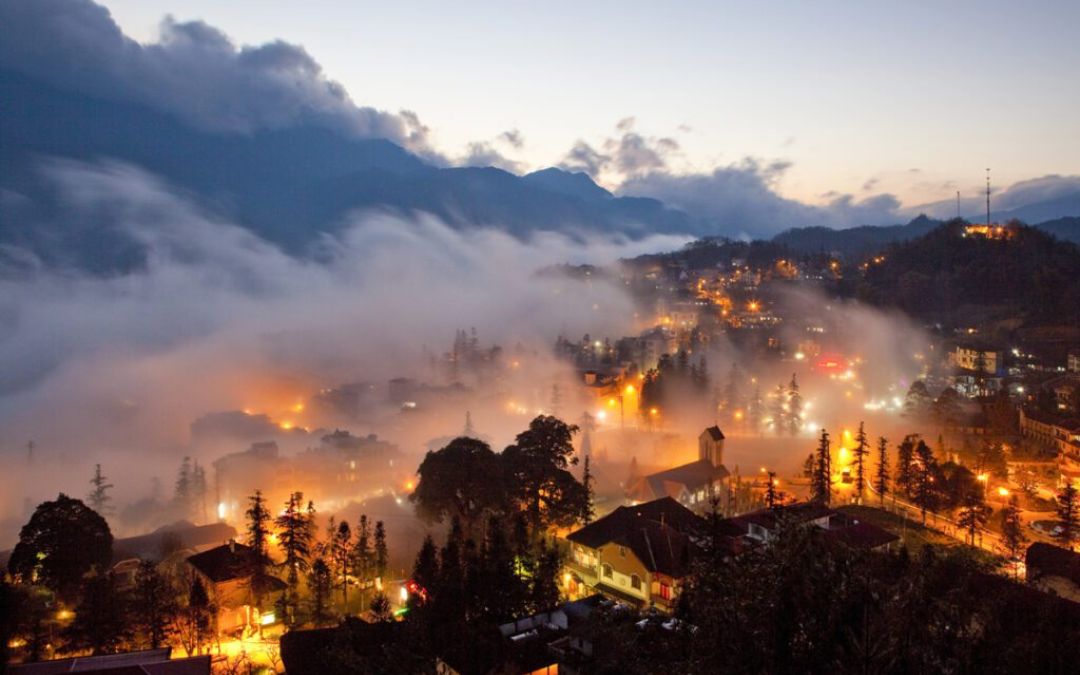
Sapa’s high-altitude mountain valleys also offer mist that clears after sunset.
>> Read More: Explore 9 Best Things to Do in Sapa besides Trekking
Koh Kood, Thailand
Location & Access
Koh Kood (also spelled Ko Kood) lies off the east coast of Thailand in Trat Province, near the Cambodian border. Reaching it involves a multi-leg journey: first by bus or flight to Trat, then overland to a pier such as Laem Sok, followed by speedboat or ferry to the island.
Within Koh Kood itself, most resorts are clustered along beaches. Moving between them or to more remote beaches, waterfalls, or viewpoint hills is easiest by motorbike, private transfer, or resort-boat where available.
Highlights
The scenery of Koh Kood is shaped by thick tropical forest, gently rolling hills, elongated coastlines of white sand, and waters shifting from turquoise to deeper blue where coral reefs lie offshore. Mangrove fringes and lush inland small streams give the island a vibrant green interior, with waterfalls such as Khlong Chao marking natural focal points.
The beaches—especially quieter ones in the north and east—offer wide horizons of sky and sea, often undisturbed by nightly lighting. Resorts in places like Ao Salad, Ao Yai, and secluded beachfront bungalows allow visitors to experience both luxury and raw nature together.
Stargazing Conditions
The dry season (roughly November through February) is the clearest period for skies on Koh Kood. In these months, the air is less humid, rainfall is minimal, and cloud cover tends to dissipate after sunset. Nights during this time, especially when the moon is thin or after moonset, reveal stars sharply, with less haze.
Conversely, May to October (especially mid-rainy season) brings frequent showers, high humidity, and often heavy cloud cover, which dims the visibility of stars and sometimes makes the night skies overcast.
Because the island has many stretches with low or no artificial light (especially away from bigger resorts and piers), light pollution is relatively low. Hence, even partial moonlight nights can still yield beautiful sky views in remote beaches or forested settings.
Experience & Activities
- Resort observatory nights: Places like Soneva Kiri have invested in observatories and dark-sky friendly lighting, offering guided stargazing sessions. One such experience allows observing constellations, planetary rings, and even moons of Jupiter under a 360-degree sky, often between about 20:30 and 22:30 after full darkness.
- Beachfront sky-walks: On quiet beaches away from lights, especially those northern or eastern shores, walking or sitting just past dusk lets the sky gradually take over. There the horizon over the ocean is unobstructed, and the sound of waves creates a gentle soundtrack while stars become vivid.
- Remote Hut or Bungalow Views: Staying in lodging that places you farther from piers, roads, and main resorts means fewer light sources nearby. Some resorts use sustainable lighting to avoid glare, which enhances visibility of dimmer stars and features like the Milky Way.
- Moon-phase planning: Aligning arrival with new moon or crescent moon phases maximizes darkness. On Koh Kood, when the moon has set or is very slender, even fainter celestial features show more clearly due to the minimal sky glow.
- Timing after rain showers/early evenings: In the green or transitional season, nights following afternoon rains often have cleaner air (washed-out haze), and skies can clear up. Also, early evening before resorts or boats lights fully turn on tends to be one of the best windows to see stars without interference.
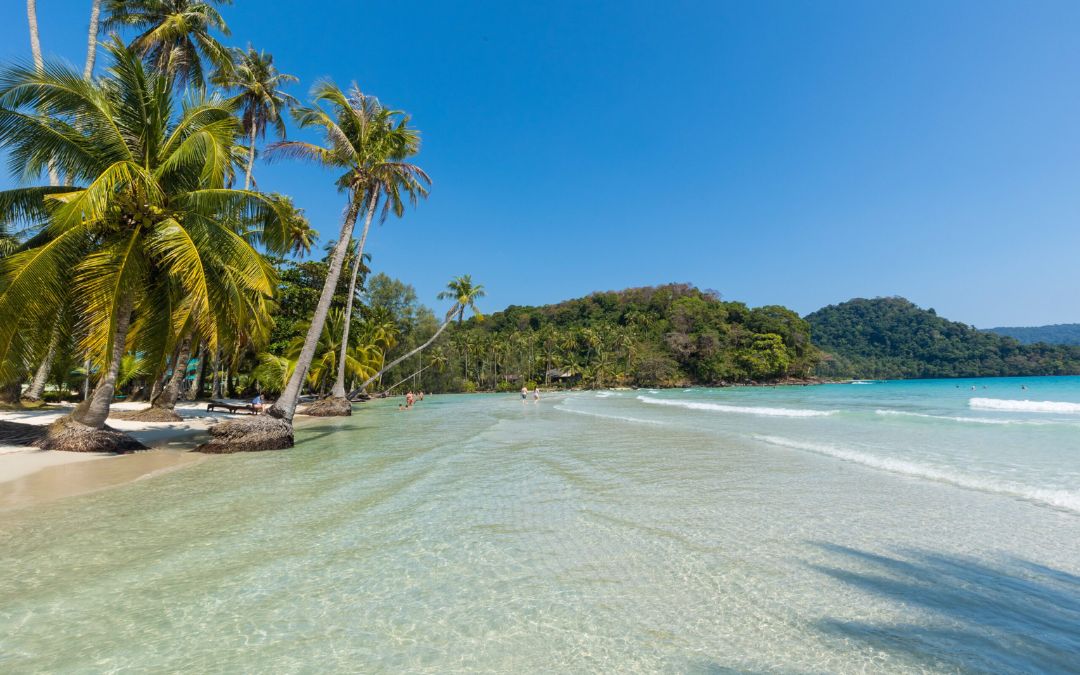
Koh Kood’s remote island beaches are far from Thailand’s mainland light pollution.
Bagan, Myanmar
Location & Access
Bagan is located in the Mandalay Region of central Myanmar, spread across the dry Irrawaddy plains. The main hubs are the towns of Nyaung U and Old Bagan, both serving as gateways to thousands of pagodas in the archaeological zone.
Most visitors fly or take a train/bus to Mandalay or Yangon and then transfer by road to Bagan. From Nyaung U, local transport (bikes, e-bikes, horse carts) takes travellers across the temple fields. Getting to remote pagodas or viewpoint hills requires a bit of riding or walking, especially after dusk.
Highlights
This land of temples is where more than 2,000 Buddhist monuments—pagodas, stupas, and monasteries—dot a vast flat plain, rising from low scrubland and dirt roads. Key sites include Ananda Temple, known for its symmetrical architecture and four golden standing Buddhas facing each cardinal direction.
Also, Thatbyinnyu Temple, the tallest temple (~ 61 m), towers above many others and provides sweeping views of the plain. Sulamani Temple and Dhammayangyi Temple add both grandeur and mystery: Sulamani for its detailed frescoes and elegant form; Dhammayangyi for its massive size and slightly haunted aura in local lore.
As dusk falls, silhouettes of stupas emerge among the heat-hazed air and cast shadows across dusty field paths, the river in the distance quietly reflecting the last light.
Stargazing Conditions
Best nights come during the dry season, from about November through February/early March. During these months, skies tend to be clearer, humidity drops, and clouds are few. Night temperatures become more comfortable—after sunset, the air cools significantly, which helps reduce haze.
During the hot season (March-May), heat, dust, and occasional haze affect visibility. Besides, during the wet season (May-October), cloud cover, afternoon showers, and damp air often obscure stars.
Light pollution is relatively low in many parts of Bagan once one moves away from the brighter town centres. Remote pagodas or fields give darker skies. Also, nights following a rain shower (which clears dust) often bring particularly crisp skies.
Experience & Activities
- Temple-plain night walks: Roaming between pagodas in the archaeological zone after sunset, especially in less frequented areas, allows watching stars rise above the temple spires. Torches with dim red light are helpful so as not to disturb the ambient darkness or temples.
- Viewpoint fields/hills: Climb up small hills or viewpoint mounds (where access permitted) outside Old Bagan or near Nyaung U. From these elevated stargazing places, the horizon is broad and uninterrupted, letting the Milky Way arch faintly above the temple canopy and distant riverbanks.
- Stargazing near Ananda/Thatbyinnyu: These major temples form landmarks. Sitting near them (but off temple steps or restricted zones) allows for combining awe of architecture with sky-watching. The shadows thrown by their tall structures add dramatic foregrounds for photography.
- Moon-phase & timing: Plan overnight visits around new moon nights or thin crescents. With minimal moonlight, dimmer celestial features (meteor showers, faint constellations) become more visible. Also, early evenings (just after twilight) and late nights (after most local lights go off) yield clearer views.
- Photography of temples under stars: Using long exposures to capture star trails behind temple silhouettes or using temple spires as framing objects makes for memorable night shots. Some photographers use low light to reveal texture on stone carvings in moonlight, juxtaposed with deep star fields overhead.
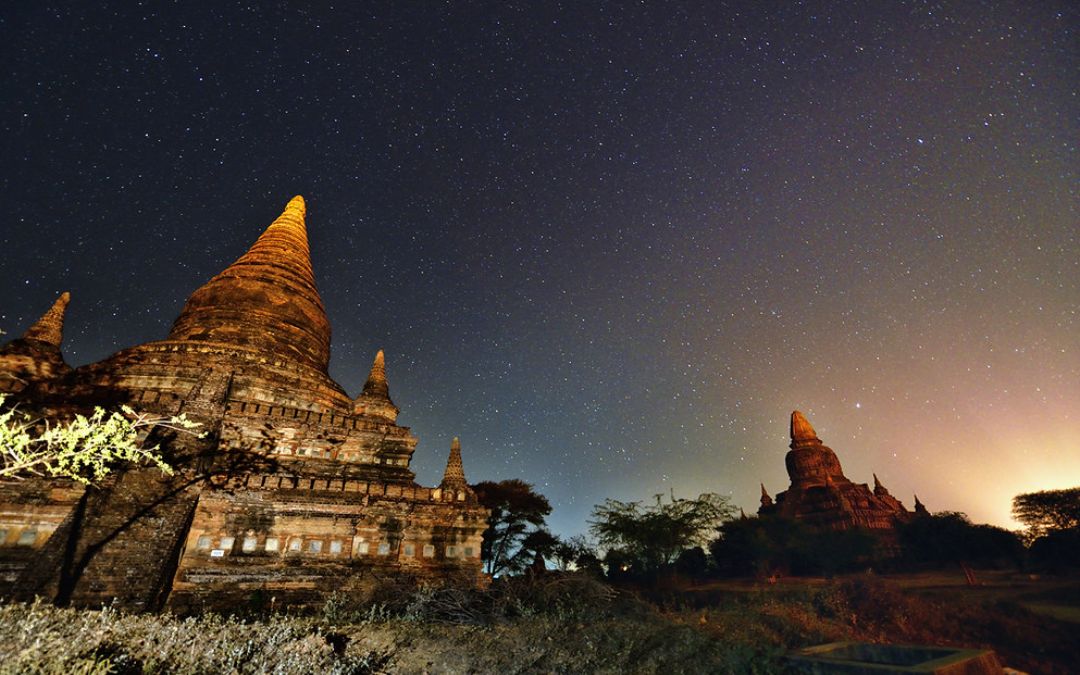
Ancient temple complexes in Bagan create mystical places for stargazing.
Final Words
The landscapes of Southeast Asia have a way of making stargazing feel even more special. Each of these stargazing places has its own unique character—some remote and quiet, while others are perched high above the sea or nestled deep in nature. The conditions may vary, but they all lead you to the same reward: a sky painted with stars brighter than you could imagine.
For travelers ready to explore these spectacular nightscapes, Asia Pioneer Travel provides curated journeys that connect stargazing places with comfort, insight, and local expertise. Contact us now!
